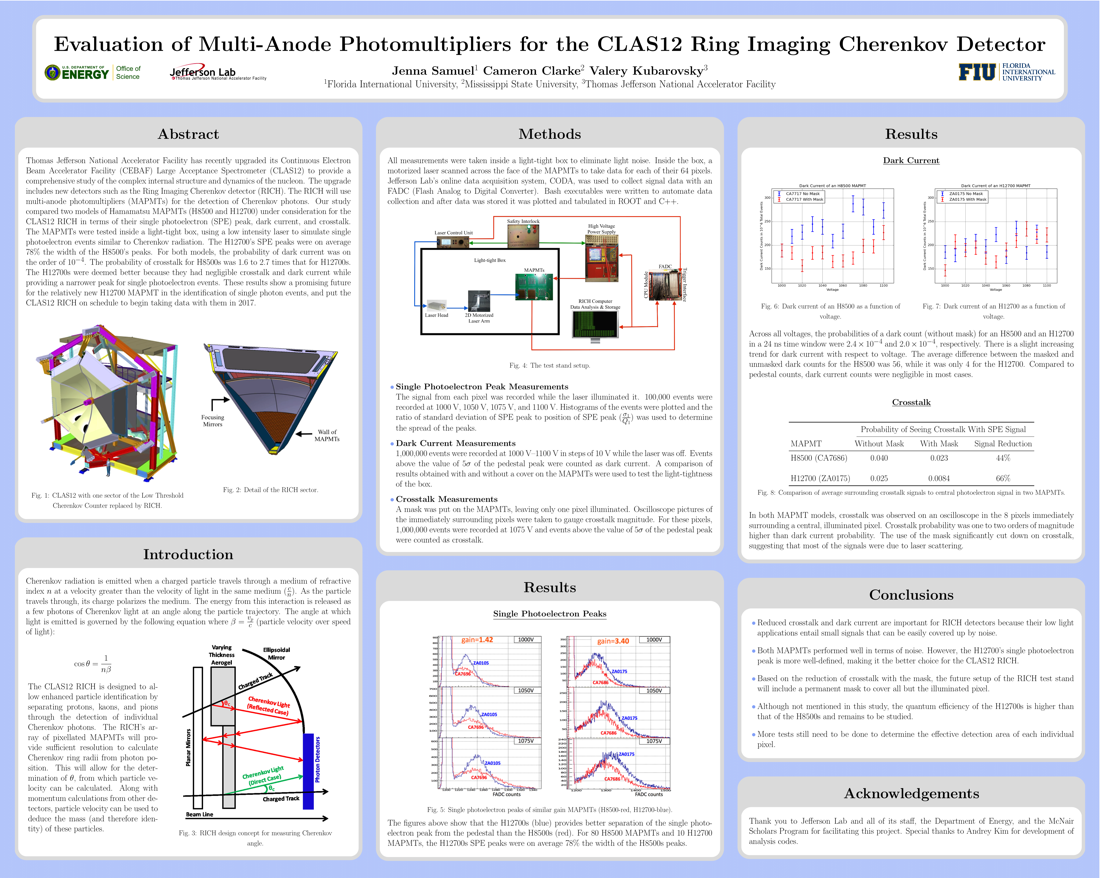Undergraduate Research at Jefferson Lab
Evaluation of Multi-Anode Photomultipliers for the CLAS12 RICH Detector
Student: Jenna Samuel
School: Florida International University
Mentored By: Valery Kubarovsky
Thomas Jefferson National Accelerator Facility has recently upgraded its Continuous Electron Beam Accelerator Facility (CEBAF) Large Acceptance Spectrometer (CLAS12) to provide a comprehensive study of the complex internal structure and dynamics of the nucleon. The upgrade includes new detectors such as the Ring Imaging Cherenkov detector (RICH). The RICH will use multi-anode photomultipliers (MAPMTs) for the detection of Cherenkov photons. Our study compared two models of Hamamatsu MAPMTs (H8500 and H12700) under consideration for the CLAS12 RICH in terms of their single photoelectron (SPE) peak, dark current, and crosstalk. The MAPMTs were tested inside a light-tight box, using a low intensity laser to simulate single photoelectron events similar to Cherenkov radiation. The H12700's SPE peaks were on average 78% the width of the H8500's peaks. For both models, the probability of dark current was on the order of 10-4. The probability of crosstalk for H8500s was 1.6 to 2.7 times that for H12700s. The H12700s were deemed better because they had negligible crosstalk and dark current while providing a narrower peak for single photoelectron events. These results show a promising future for the relatively new H12700 MAPMT in the identification of single photon events, and put the CLAS12 RICH on schedule to begin taking data with them in 2017.

Citation and linking information
For questions about this page, please contact Education Web Administrator.
